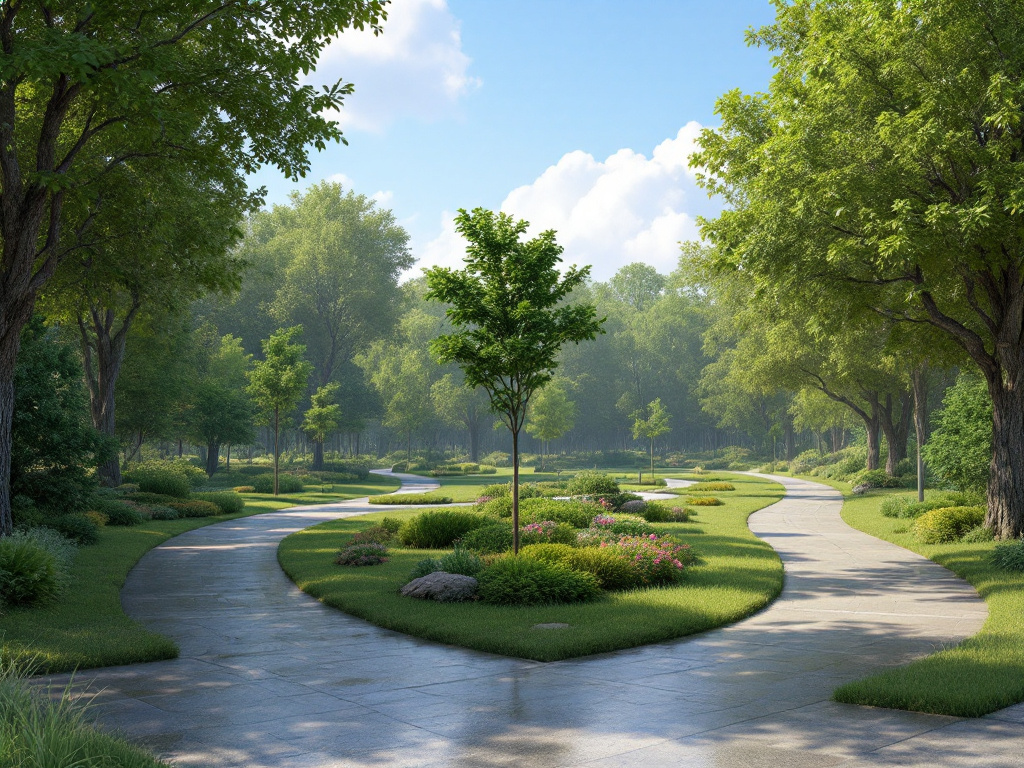Image generated by flux-ai.io & content generated by ChatGPT Version 4o-mini
Understanding Urban Forests: Lessons from Gainesville for Suwannee County
Residents of Suwannee County, Florida, may not think much about the trees and shrubs around them, but a recent study of Gainesville’s urban forest offers valuable insights that could apply right here at home. This research highlights how urban forests contribute to our communities and the environment, and it underlines the importance of taking care of these green spaces—something that can resonate deeply in our own backyard.
What is an Urban Forest?
An urban forest isn’t just a collection of trees; it’s a complex ecosystem that includes not only trees but also shrubs and ground cover. Researchers analyzed the structure and composition of Gainesville’s urban forest, discovering that it plays a significant role in improving air quality, providing shade, and managing stormwater. Just like the trees and plants in Suwannee County, Gainesville’s urban forest helps cool the area, making it more comfortable, especially during our hot summers.
Key Findings from the Study
-
Diversity Matters: The researchers identified 173 different plant species in Gainesville, with most of them being native to Florida. This diversity is crucial because it helps the forest resist pests and diseases. In Suwannee, we can encourage a variety of native plants in our yards and parks to enhance local biodiversity and resilience. Selecting plants with seeds, fruit, foliage, flowers, or berries will provide food for wildlife, promoting a balanced ecosystem.
-
Tree Canopy Cover: The study found that Gainesville has an average tree canopy cover of 47%. This canopy acts like a natural air conditioner, cooling the environment and reducing energy costs for homes. For Suwannee residents, maintaining and planting trees can lead to lower electricity bills and a more pleasant outdoor experience. As organic mulch decomposes, it improves soil structure and moderates soil temperatures, further enhancing the benefits of tree canopies.
-
Ground Cover’s Role: The research also looked at ground cover, which includes all the vegetation below one foot tall. Ground cover helps with water absorption, reducing flooding risks during heavy rains. In areas like Suwannee, where rainfall can be intense, having good ground cover can help manage stormwater and protect our local waterways from runoff pollution. Implementing swales and berms in landscaping can capture stormwater effectively, promoting better water management.
-
Effective Use of Space: The study showed that residential areas had the highest diversity of tree species because homeowners tend to plant a variety of trees. This finding suggests that if Suwannee County residents plant more diverse species in their yards, it could enhance the local environment. Not only do they look beautiful, but they also support local wildlife, which benefits our ecosystem.
Why This Matters to Us
As Suwannee County continues to grow, understanding how to manage our natural resources becomes increasingly important. Trees and plants are not just aesthetic additions to our landscapes; they are vital for our health and the health of our environment. They provide shade, improve air quality, and even support local agriculture by maintaining soil health. By planting trees, shrubs, and flowering plants, we can create a resilient landscape that helps to control pests naturally and provides habitat for local wildlife.
For instance, with many families involved in agriculture and small farming, having a robust urban forest can enhance crop yields by providing shade and improving the microclimate around fields. The findings from Gainesville can encourage local leaders and residents to prioritize tree planting and conservation efforts, ensuring that our community remains vibrant and resilient against the challenges posed by climate change.
Getting Involved
Suwannee County residents can take action by participating in local tree-planting initiatives or community programs focused on environmental education. Whether it’s through 4-H youth programs or local environmental groups, there are many ways to get involved. By planting trees and maintaining our green spaces, we can build a healthier and more sustainable future for Suwannee County. Additionally, becoming a Florida Master Gardener or participating in local conservation efforts can enhance our knowledge and commitment to preserving our natural resources.
In summary, the lessons learned from Gainesville’s urban forest can inspire us in Suwannee County to appreciate and enhance our own natural spaces. By valuing our trees and green areas, we can ensure that our community thrives for generations to come.
References
FR344/FR413: The Structure and Composition of Gainesville’s Urban Forest in 2016. (n.d.). Ask IFAS – Powered by EDIS. https://edis.ifas.ufl.edu/publication/FR413

